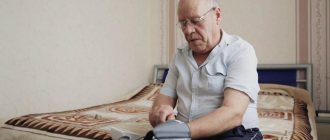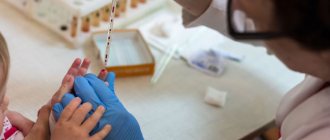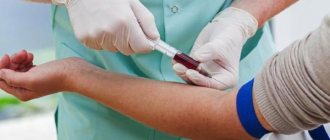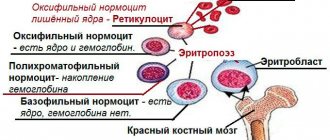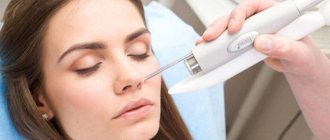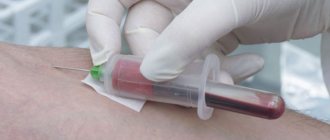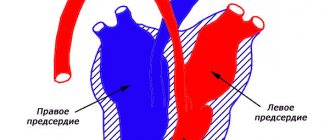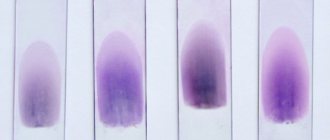Main manifestations of wounds
Pain
In this case, pain occurs due to damage to the nerve endings that were located at the site of the injury. Over time, swelling may increase, which also leads to increased pain. The severity and degree of manifestation of pain depends on factors such as:
- location of the defect, concomitant damage to large nerve trunks;
- type of weapon or conditions of damage (asphalt, garden, bicycle, sharp object, etc.);
- psychological state of the child.
In essence, pain is an adaptive defense reaction of the body.
Bleeding
Any damage to the skin or mucous membranes is in one way or another accompanied by damage to blood vessels (capillaries, arteries, veins). The nature and degree of bleeding depends on the type of damaged vessel. The larger the vessel and the higher the pressure in it, the more massive the bleeding, and vice versa. It is worth highlighting those places on the body that are accompanied by more heavy bleeding: face, head, neck, hands . In these places, the tissues are better supplied with blood. The condition of the blood coagulation system plays an important role. If a child has a minor abrasion or scratch, which is accompanied by prolonged and heavy bleeding, then it is necessary to consult a pediatrician and pediatric hematologist in order to exclude a disease of the blood coagulation system. This may also be indicated by the appearance of a large number of bruises for no reason.
If a small abrasion is accompanied by prolonged and heavy bleeding, then it is necessary to consult a hematologist.
Hiatus
This phenomenon is associated with a reduction in the elastic fibers of the skin. As a result, the skin edges of the lesion diverge. Many surgeons know what Langer's lines are. They indicate the course and direction of the fibrous structures of the skin. For this purpose, incisions are made along these lines, which leads to rapid healing of the incisions and reduction of gaping. Accordingly, when a defect appears perpendicular to these lines, a wide divergence of the edges of the defect develops.
How to stop arterial bleeding?
Injuries that are accompanied by bleeding require urgent measures. Blood loss when a large artery is injured (carotid, brachial, femoral artery, aorta) is such that a person can die in 2.5-3 minutes. Agree, this is quite small. That is why arterial bleeding must be stopped quickly.
It's not that difficult to define. Bright red blood that comes out of the wound in a pulsating stream, sometimes in the form of a fountain.
The very first thing to do is to stop the flow of blood to the wound. To do this, finger pressure is used - the artery is compressed with two to four fingers until the pulse disappears. This measure is temporary; it will prevent the victim from dying from blood loss and will give time to prepare and apply a tourniquet or sterile pressure bandage.
- in case of arterial bleeding, the popliteal artery is pressed onto the lower leg. Pressing is done with both hands. The thumbs are placed on the front surface of the knee joint, and with the remaining fingers they feel the artery in the popliteal fossa and press it to the bone;
- in case of arterial bleeding from the thigh, the femoral artery, which is located on the inner surface of the upper thigh directly under the inguinal fold, is pressed;
- in case of arterial bleeding from the upper limb, press the brachial artery to the humerus at the inner surface of the biceps brachii muscle with four fingers. The effectiveness of the pressure is checked by the pulsation of the radial artery on the inner surface of the elbow;
- when bleeding from a wound located on the neck, press the carotid artery with fingers or a fist on the side of the wound below the wound.
To gain time to prepare the bandage, it is allowed to stop the bleeding by inserting a roller made of gauze, cotton wool or tight soft material into the folds of the limbs. It is also permissible to fix the limbs in a certain position:
- to stop bleeding from wounds of the hand and forearm, the roller is placed in the elbow bend. Bend the victim’s arm at the elbow, while the forearm must be tied tightly to the shoulder and tied with a tourniquet;
- to stop bleeding from the brachial artery, a roller is placed in the armpit and the arm bent at the elbow is firmly fixed to the chest;
- in case of bleeding of the lower limb, the cushion is placed in the popliteal fossa;
- in case of damage to the subclavian artery and bleeding in the armpit, move the arms bent at the elbow behind the back as much as possible and fix them at the level of the elbow joints. This technique cannot be used for fractures of limb bones;
- if the popliteal, femoral, brachial and ulnar arteries are damaged, bend the limb as much as possible.
After the bleeding has stopped and you have time, you need to apply a pressure bandage or tourniquet to the place of pressure. A pressure bandage is used for wounds of small arteries. Several layers of sterile gauze or bandage are applied to the wound and bandaged tightly. As for the tourniquet, if it is not available, you can use a piece of thick fabric, a tie, a rope, a waist belt, etc. A tourniquet is applied to the shoulder, forearm, lower leg or thigh above the bleeding site. The tourniquet cannot be applied directly to an open area of the body, so it is necessary to place gauze or cloth under it, or this is done on top of clothing, having first straightened the folds on it. Make 2-3 turns of the tourniquet around the limb and then tighten it until the bleeding stops and the pulsation of the vessel below the application site can no longer be detected. It is not necessary to tighten the tourniquet excessively, as there is a high risk of damage to the muscles and nerves, which can lead to paralysis of the limb and even its necrosis.
Remember that a hemostatic tourniquet is applied:
- in the warm season (+4°C and above) - for a period of no more than one hour;
- in the cold season (below +4°C) - for a period of no more than half an hour. Moreover, the limb below the tourniquet must be wrapped warmly (artificial heating cannot be used), since it cannot heat itself.
If it is necessary to leave the tourniquet for a longer period, press the vessel with your finger above the wound site, slightly and smoothly loosen the tourniquet for 10-15 minutes, then reapply it slightly higher or lower than the previous position.
Application of a tourniquet
The place where the tourniquet or bandage is applied should be clearly visible and not hidden by clothing or bandages. To control the elapsed time and make the work of the ambulance team easier, it is necessary to place a note under the tourniquet or attach a note to clothing next to it, indicating the date and exact time the tourniquet was applied, for example, May 12, 11:25 am.
A victim with severe arterial bleeding after applying a tourniquet should be immediately taken to the nearest medical center.
Types of wounds
They can be:
- Operating: applied deliberately for the purpose of performing an operation.
- Accidental: as a rule, these are household damages.
Depending on the nature and conditions of the damage, wounds are distinguished:
- chopped;
- I stab;
- bruised;
- torn;
- crushed;
- chopped;
- bitten;
- mixed;
- firearms.
In children , cut, puncture, bitten, mixed, and also superficial (abrasions, scratches, etc.) predominate. Particular attention is paid to bites that result from an animal or human bite (for example, another child), as they are the most infected. This is due to the large number of harmful bacteria in the oral cavity. They are most often complicated by infection.
According to the degree of infection there are:
- Freshly infected. As a rule, this damage occurs within 3 days from the date of its application. Defects with soil contamination are especially infected.
- Purulent. An infectious process develops in these lesions. Microbes, when multiplying, lead to increased inflammation, necrosis, and also contribute to the appearance of pus. Children with purulent manifestations develop symptoms of general intoxication: nausea, headache, dizziness, weakness, lethargy.
How to bandage a finger
It is most often necessary to bandage fingers in case of traumatic bleeding. The bandage should fit tightly around the wounded part of the finger, only then will it be useful. Long bandages stay on the finger better.
Before bandaging the finger, the wound must be treated and the bleeding must subside.
First way
Wrap your finger in a sterile gauze bandage and apply a bandage on top. Try to bandage your finger evenly, otherwise the bandage will slip off. The place where the blood oozes the most needs to be additionally wrapped several times.
You can secure the bandage with an adhesive plaster. To do this, you will need two strips of regular adhesive tape. Secure the first strip, about 30 centimeters long, vertically from the base of the bandage to the palm of your hand. Then move it up to the tip of your finger and then along the back of your finger along the back of your hand.
Another piece of adhesive tape will be needed to secure the middle part of the bandage. This plaster should not be tightly secured; its role is to hold the already tightly bandaged bandage and the longitudinal plaster.
Second way
You cannot stick the patch around your finger several times so as to form a ring. This method of securing the bandage will interfere with normal blood circulation. A finger bandage that is too tight will be noticeable - it will begin to pulsate, go numb, and its color will change. The bandage should be loosened immediately.
Wounds heal better and there is less chance of infection if they are bandaged as little as possible. If the bandage is loose or dirty, apply a new layer of bandage on top of the old one.
The bandages should be removed carefully, the last layer should be removed in the direction of the cut. For example, if the cut runs along the arm, the last layer of bandage should be removed along the arm. This will prevent the edges of the wound from moving apart and bleeding will not resume.
The cut or wound may pulsate slightly during the first 24 hours. If the pain gets worse later, the wound may have become infected. You need to remove the bandages and examine the wound. If there is redness, swelling, swelling, you should seek medical help.
Wound healing and factors influencing this process
The wound healing process can be disrupted by many factors.
Healing is the process of repairing damaged tissue and restoring its integrity. During the healing process, certain processes occur. We will not dwell on them in more detail, but will only indicate those factors that may disrupt the healing process:
- Age. As a rule, this applies more to older people. The child's body has great regenerative capabilities. This is due to the high level of anabolic (construction) processes in the body.
- Attachment of infection.
- Decreased immunity.
- Poor circulation in the wound area.
- Chronic diseases (diseases of the respiratory and cardiovascular systems, diabetes, tumors and others).
Healing complications
- Attachment of infection . Most often, a nonspecific purulent infection develops. The threat is tetanus, rabies, diphtheria. Therefore, injuries that have been bitten and contaminated with soil or old metal objects should be immediately examined by a surgeon with a number of preventive measures taken (administration of anti-tetanus serum, rabies vaccine).
- Bleeding.
- Divergence of defect edges.
- In some cases, healing may be complicated by a hypertrophic scar or keloid . They are an abnormal scar that can spread beyond the defect area and also contribute to the development of complications.
Why does my nose bleed?
Nosebleeds have many causes. Fortunately, most of them are not serious.
The most common cause of nosebleeds is dry air. Dry air can be caused by hot climates with low humidity or hot indoor air. Both environments cause the nasal membrane (the delicate tissue inside the nose) to dry out, crust or crack, and increase the likelihood of bleeding when rubbing or blowing the nose.
Other common causes of nosebleeds include:
- nose picking;
- colds (upper respiratory tract infections) and sinusitis, especially episodes that cause repeated sneezing, coughing, and nose-blowing;
- severe nose blowing;
- trauma to the nose and/or face;
- allergic and non-allergic rhinitis (inflammation of the nasal mucosa);
- blood thinning drugs (aspirin, non-steroidal anti-inflammatory drugs, warfarin, etc.);
- chemical irritants (chemicals in cleaning products, chemical fumes in the workplace, other strong odors);
- great height. As altitude increases, the air becomes thinner (lack of oxygen) and drier;
- deviated septum (irregular shape of the wall separating the nose on both sides);
- Frequent use of nasal sprays and medications for an itchy, runny or stuffy nose. These medications—antihistamines and decongestants—can dry out the nasal membranes;
Other, less common causes of nosebleeds include:
- alcohol consumption;
- bleeding disorders such as hemophilia, von Willebrand disease or leukemia;
- high blood pressure;
- atherosclerosis;
- facial and nasal surgery;
- nasal tumors;
- nasal polyps;
- immune thrombocytopenia;
- pregnancy.
The reason may tell you what to do if your nose bleeds.
Products for treating wounds in children
Below we list the most popular and affordable means for treating superficial wounds in children:
- Iodine. Suitable for superficial abrasions, but not for deeper injuries.
- Diamond green.
- Hydrogen peroxide. It is the drug of choice for first aid in the treatment of superficial abrasions in children. Allows you to clean abrasions and scratches well. An equally important property is stopping bleeding.
- Furacilin. To prepare a solution for topical use, dissolve the tablet in water.
- Miramistin. It is also an antiseptic for topical use. Allows you to prevent suppuration. If a purulent process occurs, it allows you to fight it. A pleasant bonus will be the possibility of using this remedy for acute respiratory viral infections, sore throats and pharyngitis in children.
- Chlorhexidine.
An antiseptic helps prevent suppuration.
To speed up healing, ointments and creams can be used such as:
- Levomekol;
- Betadine;
- Vishnevsky ointment;
- cream Bepanten plus.
Treatment with folk remedies
There are many folk remedies that can be used as aids in the treatment of cuts. Their use is especially relevant in situations where trouble occurs outside the home, or when appropriate medications are not available.
- Aloe juice – promotes wound healing. It is necessary to squeeze the juice out of an aloe leaf, blot a napkin and apply it to the wound.
- Strawberry leaves - help cleanse an infected wound. They need to be washed and steamed, and then applied to the damaged area.
- Dry black tea – you need to grind it and sprinkle it on the surface of the wound. This remedy is effective for minor injuries.
- Ash bark - apply it to the cuts with the juicy side and fix it. Change the product 2-3 times a day.
- Plantain leaf - crush fresh leaves, apply to the wound and secure with a bandage. The product should be changed every two hours.
- A decoction of rose hips - a compress from it is applied to the wound.
- Nettle tincture – tincture is prepared from fresh nettle leaves. They should fill a glass container and fill it to the top with alcohol. After two weeks, the tincture can be used. Apply a compress with the product to the washed wound.
First aid for a child for superficial wounds
When such a situation arises, parents ask themselves: “How to treat the wound? How to properly treat a wound? What is the best remedy for treating a wound?
Before helping a child, parents need to wash their hands with soap and use an antiseptic. Next, in this sequence, you need to follow a number of instructions and actions:
- Assess the extent and nature of the damage. It is very important to understand whether the baby has a deep or superficial wound.
- Rinse and stop bleeding. Hydrogen peroxide is best suited for this purpose. You can also use a solution of furatsilin and chlorhexidine.
- Next, you can treat the skin with a drying antiseptic, for example, iodine solution or brilliant green.
- Apply an aseptic (clean) dressing.
- In the future, it is important to change the dressings regularly. It is also possible to use ointments and creams discussed earlier, which will speed up the healing process.
In case of deeper defects, heavy bleeding, wounds that have been bitten and contaminated with soil or old metal, you must urgently contact a surgeon.
Wounds are quite common, especially in young children. The task of parents is to provide timely assistance to the child in order to prevent infection. You must have a minimum first aid kit in your first aid kit. Do not self-medicate and, if threatening injuries occur, consult a doctor.
If you get a cut while shaving
If cuts occur while shaving, it is recommended to compress the wound by applying a piece of clean gauze or cloth to it and hold it for about ten minutes, without tearing off the bandage. Check after 10 minutes. The bleeding does not always stop immediately and may continue to ooze after the tampon is removed. Then you need to take a piece of paper napkin, stick it to the wound (it will hold on due to the blood) and walk like this for a while until the blood clots. After shaving, cuts should be treated with hydrogen peroxide, and in some cases antibiotic ointment may be required.
Cuts when shaving are a common occurrence, so it is important to know how to quickly stop bleeding
Consequences and complications
If first aid is provided incorrectly due to a cut finger, the following complications may develop:
- Numbness is a consequence of nerve damage.
- Infection – leads to the development of purulent infection. In this case, cleaning the wound and using antibiotics .
- Tetanus is an acute infectious bacterial disease. The causative agent is a gram-positive tetanus bacillus. The nervous system is affected, and there is a high risk of mortality (about 50%). It can develop if a person has not been vaccinated in a timely manner.
Diet
Diet for anemia
- Efficacy: no data
- Time frame: 3 months
- Cost of products: 2700-3200 rubles. in Week
You need to eat rationally and fully. At the same time, the diet should contain foods containing large amounts of collagen and other substances that promote wound healing. It is recommended to consume the following products:
- Vegetables, legumes - beans, peas, carrots, sweet peppers, green leafy vegetables.
- Fruits - citrus fruits, apples, pears, berries, bananas.
- Nuts – almonds, walnuts.
- Lean meat - turkey, chicken breast.
- Ginger.
- Seafood, sea fish.
- Oatmeal.
It is also important to drink enough fluid to activate metabolic processes.
